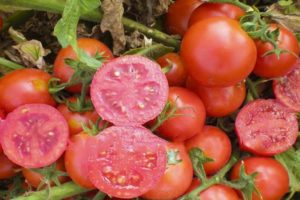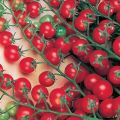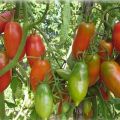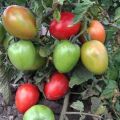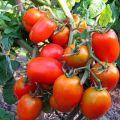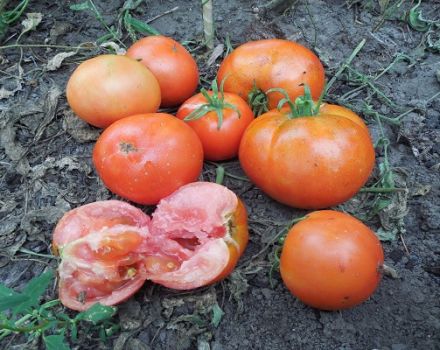Characteristics and description of the tomato variety Red Guard, its yield
Even in a short summer period, a guaranteed tomato harvest is possible if you choose varieties that are maximally adapted to local climatic conditions. The successful combination of cold resistance and high yield is demonstrated by the description of the Red Guard hybrid, created by Chelyabinsk breeders for Siberia, the Far East, the Southern and Northern Urals. Gardeners are offered premium seeds with 100% germination and guaranteed properties of hybrid plants.
The advantages of hybrids are obvious: stable quality, product uniformity, resistance to diseases and unstable natural factors. But it is impossible to prepare their seeds for future use, as well as to obtain a variety on your own, in the absence of the original parent material. Hybrid seeds should only be purchased from legal distributors.

Main characteristics
Tomatoes Red Guard f1 are hybrids in the first generation, are distinguished by high productivity, cold resistance, resistance to most tomato diseases. The main characteristics of the variety look very impressive.
- The plant is short, up to 80 cm tall, superdeterminate type. This characteristic suggests that the first inflorescence is laid above the level of 7-8 leaves, and immediately after the formation of 3-4 flower brushes, the plant stops growing.
- It is customary to grow a low-growing culture in a natural form, without stepchildren and without tying up. But as the reviews say, the tomato Red Guard f1 forms brushes with 5-9 fruits. Tomatoes weigh from 150 to 250 g. Such a serious load requires strengthening not only the trunk, but often the garter of the lateral shoots.
- A plant of medium branching, it grows well green mass. The leaf is ordinary, smooth. It is recommended to partially pinch the plant, removing all lateral shoots to the level of the first brush.
- The hybrid is not afraid of temperature extremes and low illumination, it is intended for growing in greenhouses, winter and summer greenhouses with natural solar heating, as well as for open ground. This is facilitated by the high cold resistance, which is especially relevant during the periods of returnable June frosts.
- Another characteristic of the hybrid attracts attention. This is the plant's resistance to fusarium, cladosporium, rootworm nematodes and a number of pathogens of viral diseases. This not only makes it easier to care for the tomato, but can significantly reduce crop losses.
- Fruits are round, with ribbing at the peduncle, dense, fleshy, with red dense skin. The taste is sweet and sour, pleasant. Red Guard tomatoes have good commercial characteristics: they are suitable for transportation, can be stored for a long time without losing their consumer qualities.
- The fruits of the Red Guard tomato are quite versatile, they are used for making juices, pastes, mashed potatoes. Smaller tomatoes, late ripening, do well in pickles and pickles. And, of course, the first, early harvest is used for side dishes and salads.
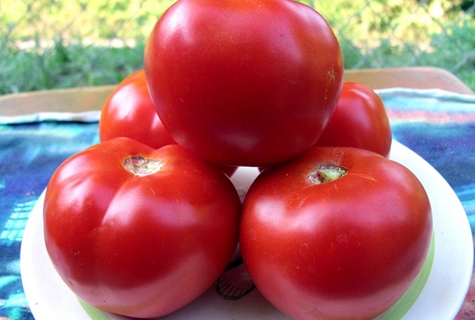
The tomato is interesting for its reliability, guaranteeing a good yield in any conditions of a short rainy summer. Compact bushes do not take up much space, so they are suitable for cultivation in small garden plots. And after transplanting into the ground, with its unpretentiousness, it will not require much time and effort to care.
Important! By limiting moisture, the ripening rate of tomatoes can be adjusted. If the water balance is disturbed, the plant strives to reproduce seeds, directing all resources to feeding the set fruits. The process is accompanied by the dropping of the ovaries.
Care features
Hybrid varieties are distinguished by simplified agronomic techniques. Undemanding lighting and limited height of the bush allow you to grow strong seedlings without problems. And this is already half the success. After landing on the street, worries become even less. This is how the main stages of hybrid care look like.
- Seeds for seedlings are planted in early April. Seedling care comes down to regular watering and loosening the soil. Top dressing is carried out every 20 days. At the stage of 2-3 permanent leaves, the plants dive.
- Seedlings are planted in a permanent place in a greenhouse in the first decade of May, placing up to 3-4 plants per sq. m. In open ground, seedlings are transplanted in the third decade of May, observing the planting density of 2-3 bushes per square meter. m.
- The stem is strengthened by tying it to supports. Care is reduced to watering, in the absence of rain, loosening the soil, weeding, top dressing as needed. The plant can be shaped by leaving one to three stems. In the first case, the harvest of ripe fruits can be expected at the end of June.
- Among the recommendations of the seed manufacturer there is a description of the simplest techniques for forming a bush. Lateral shoots are removed to the level of the first ovary or, if desired, a second reserve stem is left. You should also remove dying foliage in a timely manner.
- Under more favorable conditions, the bush may be higher and, accordingly, the dates of the first harvest are postponed to a later period. Anyone who has planted tomatoes knows that using simple techniques, you can regulate the rate of fruit ripening. One of these methods is to reduce soil moisture.
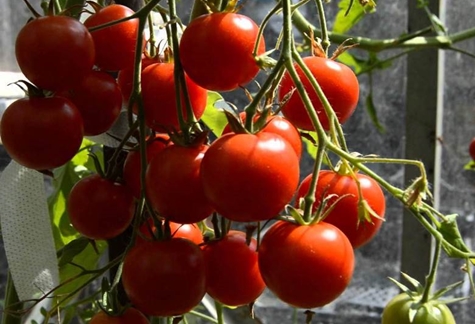
The short growing season reduces the amount of additional fertilizing. And the features of the determinant variety relieve the gardener from the need to fight the stepsons, to monitor the excessive growth of the vines. But minimal care is still needed. These varieties are suitable for those who do not have enough time to work on the site. A high-yielding, weather and disease resistant variety fully justifies its unusual name.
